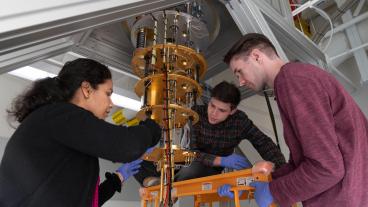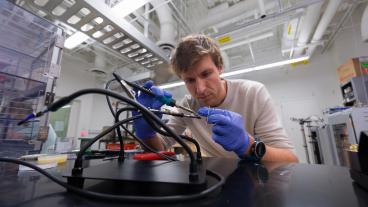New research findings “provide a road map” for improving silicon clathrate solar cells
Colorado School of Mines researchers recently published findings that could lead to improved solar cell performance.
Chemical engineering PhD student Yinan Liu was the lead author on the paper, “Synthesis and characterization of type II silicon clathrate films with low Na concentration,” published in the journal Applied Physics Reviews in November.
“Our work reveals that interpretation of measurements, like optical absorption, photoluminescence, and transport studies of such films to obtain fundamental properties of the clathrate phase, is affected by the presence of disordered alternative phases and, hence, can give misleading results. We also show how to remove these phases,” Liu told the American Institute of Physics in a Scilight article highlighting the findings. “The central importance of our work is that for the first time, new critical insights unravel the synthesis issues that have previously limited the fundamental understanding of silicon clathrates and provide a road map for further improvements, which can ultimately lead to revolutionary electronic applications for this novel silicon caged material.”
Co-authors on the paper were Carolyn Koh, William K. Coors Distinguished Chair and professor of chemical and biological engineering; Lakshmi Krishna, research assistant professor of physics; Physics Professors Emeriti P. Craig Taylor, Reuben Collins and Thomas Furtak; and research faculty members Ahmad Majid and Michael Walker.
Read the full paper at https://doi.org/10.1063/5.0062723. The research was funded under National Science Foundation Grant No. 1810463.



